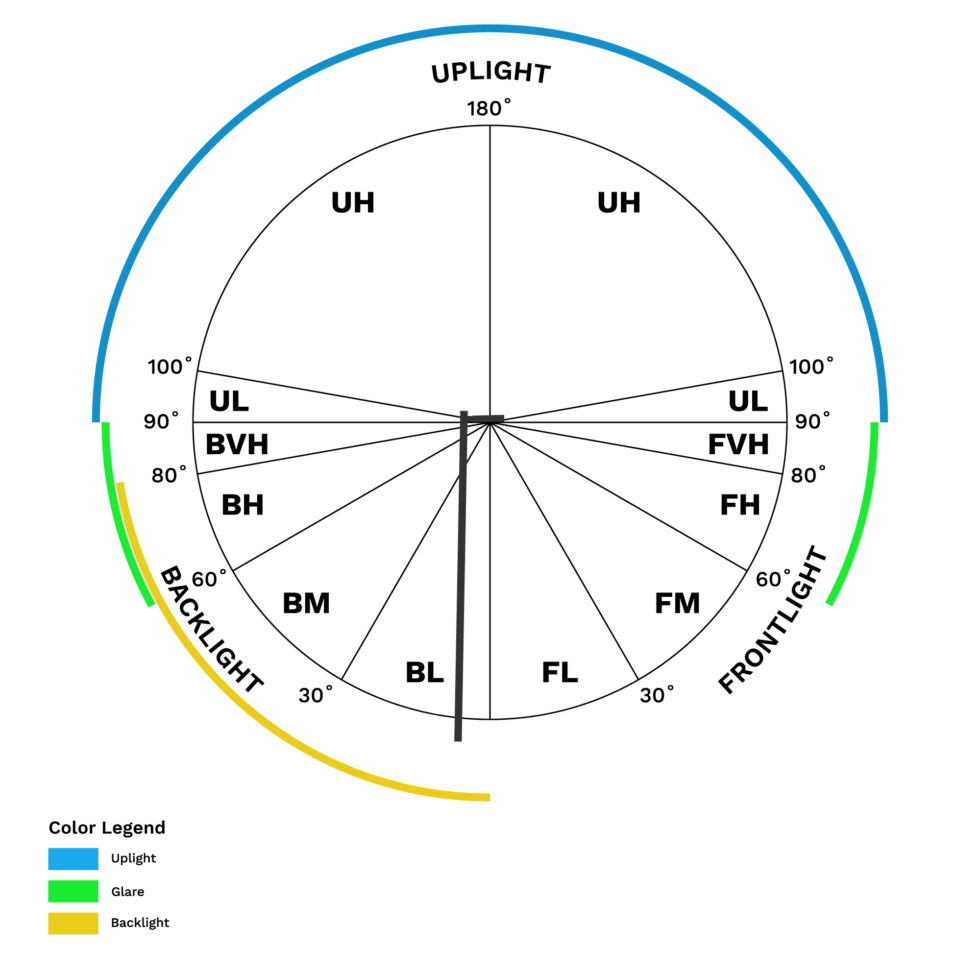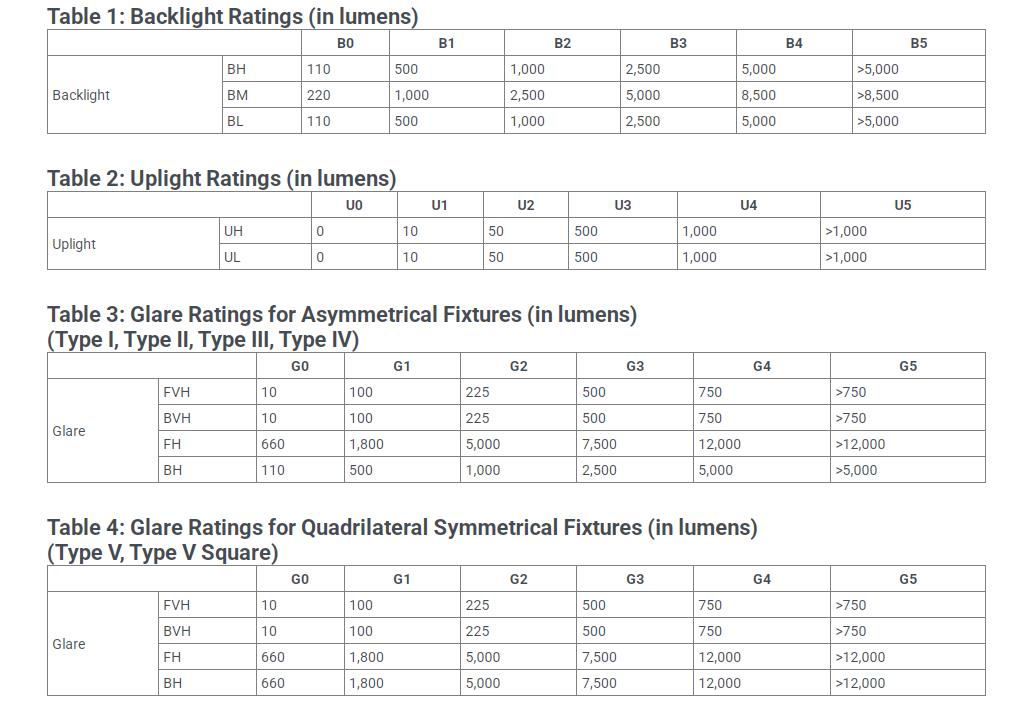BUG Rating System and Nighttime LED Outdoor Lighting
When you are outdoors, quality lighting becomes even more important. It's the only thing separating you from total darkness when the sun goes down. But this lighting needs to be available because too much stray light can send lighting everywhere but where you need it. Using the BUG Exterior System can help you choose the best exterior lighting for streetlights, area lights, pavement lights, wall sconces, and other systems while reducing light waste and light pollution.
What are BUG ratings?
The BUG Lighting Classification System is a useful way to measure the performance of luminaires at night. Developed by the Illuminating Engineering Society (IES) and the International Dark-Sky Association, the system is used to evaluate any outdoor luminaire. It was first added to the Luminaire Classification System (LCS) in 2009, replacing the previous system that was primarily for streetlights.
In these ratings, the term ‘BUG’ is an acronym for backlight, uplight and glare. All three are stray light emitted from a luminaire. While each has a positive use in some applications, they are generally considered ‘bad’ light because they are not usually light that can actually be used. However, each light performs significantly worse on some tasks than others, and the BUG ratings help to quantify this.
LED Luminaire Backlighting (B)
Backlighting, also known as light trespass, is light that emanates from the back of a fixture. This light usually protrudes outwards or towards the ground, illuminating areas that are not intended to be illuminated. Backlighting is useful when you're talking about improving the visibility of your watch or viewing your smartphone. However, when you can't sleep at night because of the light shining into your room from behind a streetlight, you might think twice. To direct more light towards the front, manufacturers can use optics, reflectors or anti-glare shields to change the direction of the light.
Luminaire uplighting (U)
Uplighting is the light that shines from a luminaire upwards into the sky, hence the term ‘sky glow’. This stray light is a common cause of light pollution in large cities. In outdoor lighting, any light that shines upwards is wasted light because it doesn't reach people where they are. It also obscures the stars and the moon from view. Sky glow can be reduced by completely shading the fixture and making sure it is pointing towards the ground. This also reduces energy use and costs.IDA is particularly concerned about limiting upward light so that more people can enjoy the stars at night.
Nighttime Glare (G)
Glare or forward light is sometimes referred to as ‘objectionable light’ because that's what it is to most people. This light can be reflected or directed, making it difficult to see - especially when it hits the eyes directly. It is especially dangerous when driving a motor vehicle at night. Glare can be reduced by using less bright lights or choosing lights with a distribution pattern appropriate for your intended use.
How to calculate a BUG rating
The BUG system may seem complicated at first glance, but it's actually quite intuitive to set up. Each stray light area is divided into the following sub-areas:
Backlight sub-area
BVH: Backlight very high (80-90°)
BH: Backlight high (60-80°)
BM: Backlight medium (30-60°)
BL: Backlight low (0-30°)
Uplighting sub-area
UH: Uplight high (100-180°)
UL: Uplight low (90-100°)
Glare Subregion
FVH: Forward light very high (80-90°)
FH: Forward light high (60-80°)
FM: Forward light medium (30-60°)
FL: Forward light low (0-30°)

Subzones are rated on a scale from 0 to 5, from lowest to highest. The highest rating of a sub-district is considered the overall rating of the district, and these data are reflected in the fixture's IES report: e.g., B3-U0-G3.

So what bug rating should I be looking for?
In short, the lower the value, the higher the rating.The IES and the Darkness Society's Model Lighting Regulations have clear definitions of recommended rating levels.
Detailed information on BUG ratings is provided below, but ratings in areas defined by the system are only one of the metrics used to assess luminaire distribution and the potential for light pollution and interfering light.
Maximum Allowable BUG Rating (as defined by the Modelled Lighting Regulations)

LZ0: No Ambient Lighting - Areas such as wilderness areas, parks and reserves, and undeveloped rural areas.
LZ1: Low Ambient Lighting - Areas such as rural and low-density residential areas.
LZ2: Medium Ambient Lighting - Areas such as light commercial areas and high density or mixed use residential areas
LZ3: Medium Ambient Lighting - Areas such as large city commercial areas
LZ4: High Ambient Lighting - special situation areas such as high intensity commercial or industrial areas.
A detailed assessment of the lighting should also take into account the overall system design, including luminaire location, utilisation of light when required, lighting quality, visual task, aesthetics, safety requirements and security issues.
Our PL-01-G3, PL-01-G7 range of luminaires have been carefully designed for optimum light performance, taking into account all aspects of good lighting design - one of which is keeping the BUG rating as low as possible. All of our luminaires have a BUG rating of 3 or less. In addition, all of our luminaires have an uplight rating of U0, which complies with the International Dark-Sky Association's (IDA) recommendation to illuminate only the areas needed to minimise light pollution.
We can help with any lighting project, we can create lighting layouts and provide product recommendations to ensure that your project is illuminated in the most efficient way and that your BUG rating is kept as low as possible.
Do you have a project you need help with? Contact us today.
E-mail: rokee@rokeelighting.net
What's app: +86 159 8987 0640
Wechat: +86 159 8987 0640